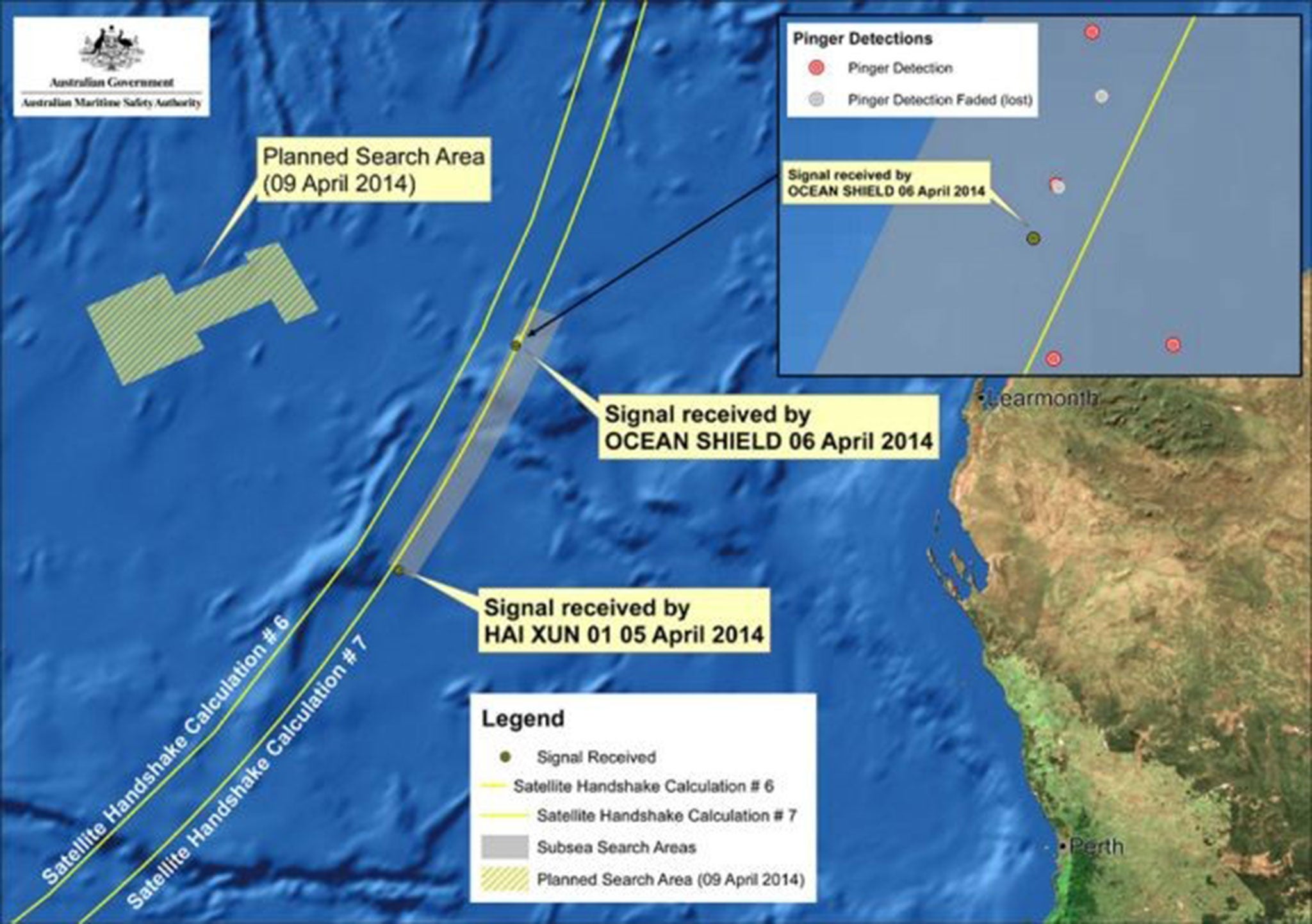Missing Malaysia Airlines Flight MH 370: Australian search teams relocate pinger signals
Search team leader says discovery of jet's final resting place could only be days away

Your support helps us to tell the story
From reproductive rights to climate change to Big Tech, The Independent is on the ground when the story is developing. Whether it's investigating the financials of Elon Musk's pro-Trump PAC or producing our latest documentary, 'The A Word', which shines a light on the American women fighting for reproductive rights, we know how important it is to parse out the facts from the messaging.
At such a critical moment in US history, we need reporters on the ground. Your donation allows us to keep sending journalists to speak to both sides of the story.
The Independent is trusted by Americans across the entire political spectrum. And unlike many other quality news outlets, we choose not to lock Americans out of our reporting and analysis with paywalls. We believe quality journalism should be available to everyone, paid for by those who can afford it.
Your support makes all the difference.The search for missing Malaysia Airlines flight MH370 received a major boost today after a ship successfully managed to relocate underwater signals that could guide the authorities to the plane's final location.
Authorities said the “pings” coming from the depths of the Indian Ocean could only be made by a mechanical source, and that the news means they are “now optimistic that we will find the aircraft”.
The signals were picked up by the Australian navy vessel Ocean Shield, one of two ships in the search that boasts sophisticated “pinger locator” equipment, in a sweep of the search area carried out on Tuesday.
Today Angus Houston, the head of the joint agency coordinating the hunt for the Boeing 777, said analysis of two signals detected in the same area last week confirmed they were consistent with what would be issued by a plane's two black boxes.
“I'm now optimistic that we will find the aircraft, or what is left of the aircraft, in the not too distant future - but we haven't found it yet, because this is a very challenging business,” Mr Houston said.
“Hopefully in a matter of days, we will be able to find something on the bottom that might confirm that this is the last resting place of MH370,” the retired air force chief told reporters at the search headquarters in Perth.
Ocean Shield first detected underwater sounds on Saturday before losing them, but managed to pick up the signals again on Tuesday, Houston said. The ship is equipped with a US Navy towed pinger locator that is designed to detect signals from a plane's two black boxes — the flight data recorder and cockpit voice recorder.
A data analysis of the signals detected Saturday determined they were stable, distinct and clear sounds that pulsed consistently — indicating they were coming from a plane's black box, Houston said.
“(The analysts) therefore assess that the transmission was not of natural origin and was likely sourced from specific electronic equipment,” Houston said. “They believe the signals to be consistent with the specification and description of a flight data recorder.”
Despite the promising evidence, Houston warned that he could not yet conclude that searchers had pinpointed MH370's crash site.
“I think that we're looking in the right area, but I'm not prepared to say — to confirm — anything until such time as somebody lays eyes on the wreckage,” he said.“And I would just like to have that hard evidence...photograph evidence...that this is the final resting place of MH370.”

For enlarged view of graphic click here
Finding the sound again is crucial to narrowing the search area so a small submarine can be deployed to chart a potential debris field on the sea bed. If the autonomous sub was used now with the sparse data collected so far, covering all the potential places from which the pings might have come would take many days.
“The better Ocean Shield can define the area, the easier it will be for the autonomous underwater vehicle to subsequently search for aircraft wreckage,” Mr Houston said.
Malaysia Airlines Flight 370, carrying 239 people on board, went missing on 8 March en route from Kuala Lumpur to Beijing, beginning one of aviation's biggest mysteries.
The search has shifted from waters off of Vietnam, to the Strait of Malacca and then finally to waters in the southern Indian Ocean as data from radar and satellites was further analysed.
The locator beacons on the black boxes have a battery life of only about a month - and yesterday marked exactly one month since the plane vanished. Once the beacons blink off, locating the black boxes in such deep water would be an immensely difficult, if not impossible, task.
In addition to the depth and remoteness of the area, search crews are also contending with layers of silt on the sea bed that can both hide any possible wreckage and distort the sounds emanating from the black boxes that may be resting there, said Royal Australian Navy commodore Peter Leavy.
Meanwhile, the search for debris on the ocean surface picked up intensity, with 15 planes and 14 ships scouring a 29,121 square mile area that extends from 1,405 miles north west of Perth.
Join our commenting forum
Join thought-provoking conversations, follow other Independent readers and see their replies
Comments